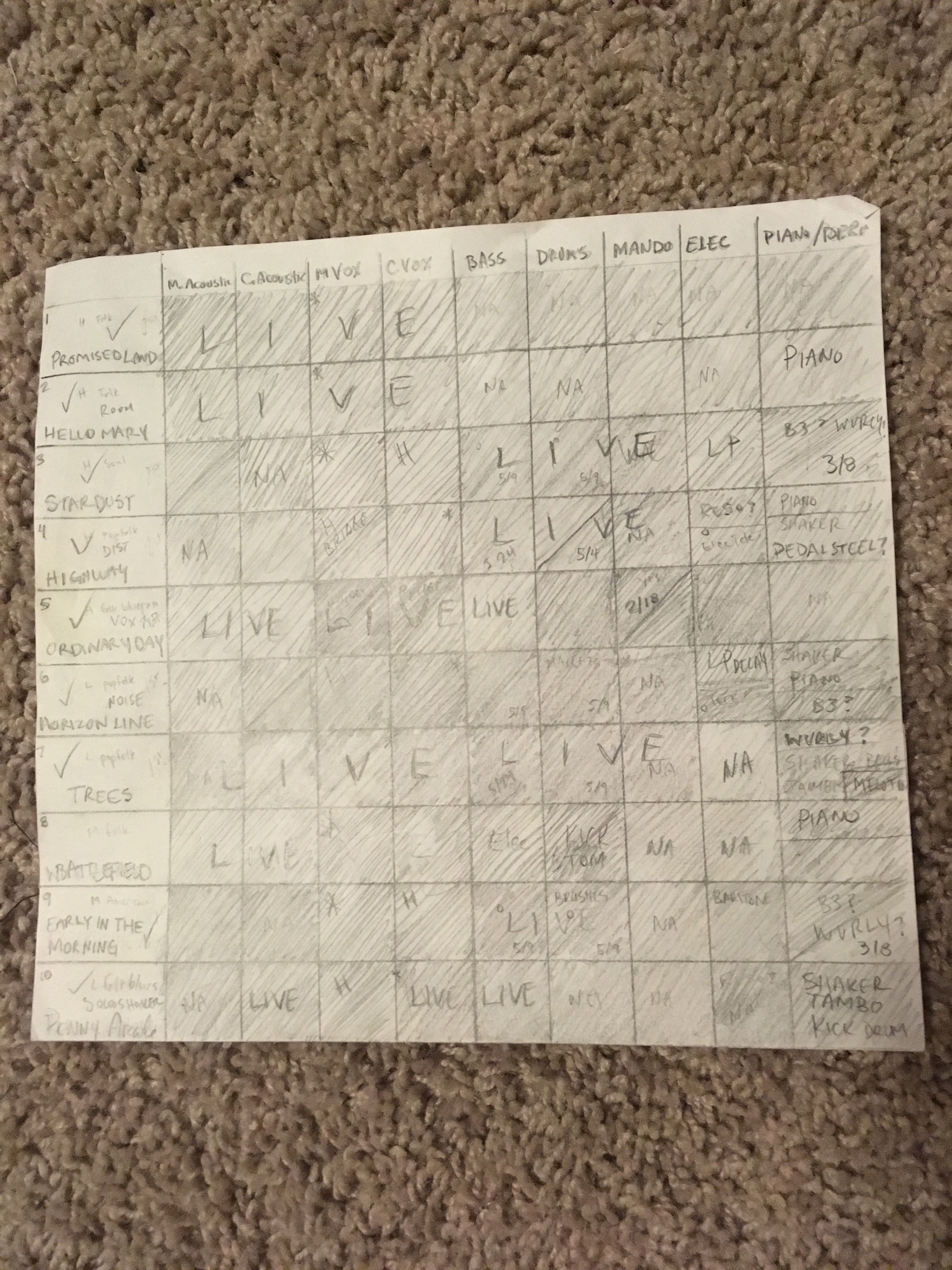Tracking sheets are one of my favorite catalysts to initiate the start of a project, a check-list, map or guide to stay on task, and a keepsake to memorialize the recording process afterwards.
![]() There's a number of ways to make a tracking sheet and information and details to include. Think of the many options similar to a mobile map program on your phone. Like the street view, satellite view or traffic options, you can also include the type of mic, outboard gear used, pre-amp/eq or other key settings to reference and recreate sounds. Whatever helps you know where you are!
There's a number of ways to make a tracking sheet and information and details to include. Think of the many options similar to a mobile map program on your phone. Like the street view, satellite view or traffic options, you can also include the type of mic, outboard gear used, pre-amp/eq or other key settings to reference and recreate sounds. Whatever helps you know where you are!
Although they were imperative when recording to a non-visual medium (tape or hard-disk) having a visual representation of what instruments you plan to record, or have actually recorded, is a great reference with a computer based work-station as well. I've found it puts me into the mode of "this has moved from concepts to actionable reality".
Tracking sheets double as a checklist for which songs you're working on and a mark of the progress of any overdubbing or building layers – with individual instruments or session musicians. It also helps credit the musicians contributing to each track.
If you haven't already found a method for building your own tracking sheets, here's mine and a few things I've come to appreciate while working on an album.
Supplies:
- A full sheet of paper (larger paper is great especially if you're recording a dozen or more songs and plan a lot of instruments/layers)
- A ruler
- Pencil (a pen can work, but if you change your mind it's nice to have an erasure option)
Start by making straight line columns and rows (large enough for track names or instruments)
I usually aim for square boxes and maybe divide the amount of songs (or instruments) by the length/width of the paper minus the title column/row. Math!?
For some reason I end up with songs top to bottom and instruments left to right. It's completely reasonable to swap that though, especially because that's how recording software visualises (inputs stack top to bottom).
I've had musicians initial each box (a homage to how my family would sign the chocolate sampler boxes growing up) and sometimes include the date. It can come in handy when making album credits. I'll also write notes of what specific type of instrument (i.e. Les Paul, Rhodes) tempo (especially if decided in pre-production, before tracking) and versions or progress of mixes/re-mixes.
Below are more pictures of some tracking sheets I've kept. I included a recreation of the first one I made, for the first song I recorded in a studio (in the image up top) I tried communicating mix notes by laying instruments on a panning left to right axis and level axis up and down. The engineer was so gracious and did a great job following the notes.
I hope this offers some insight into one of the most valuable pre-production tools and my favorite mementos from sessions past.



